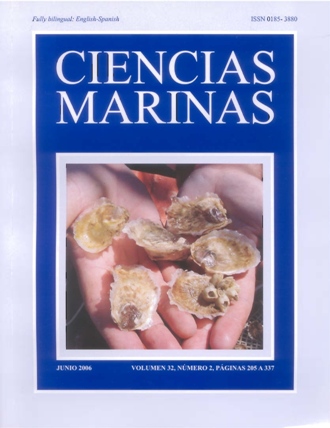Fatty acid profile of Crassostrea rhizophorae from Chacopata and La Restinga lagoons (Venezuela) and Caroni Swamp (Trinidad and Tobago)
Main Article Content
Abstract
A comparative evaluation was made of the fatty acid content in total lipid, phospholipid and triacylglycerol extracts of Crassostrea rhizophorae, collected from Chacopata and La Restinga lagoons (Venezuela) and Caroni Swamp (Trinidad and Tobago). The phospholipids and triacylglycerols were separated from the extract by preparative thin-layer chromatography. The fatty acid esterification of these lipids followed by gas chromatography allowed the characterization and quantification of the fatty acids present in the three samples studied. The saturated fatty acid content was higher than the polyunsaturated fatty acid content in the phospholipids and triacylglycerols, while the monounsaturated fatty acids occurred in lower proportion, except for the triacylglycerols from the Chacopata sample, which showed high concentrations of polyunsaturated fatty acids (48.30%) and low concentrations of saturated fatty acids (22.70%). The total percentage of polyunsaturated fatty acids was higher for phospho-lipids than for triacylglycerols. In the case of total lipids, a high concentration of polyunsaturated fatty acids was observed, followed by saturated fatty acids; monounsaturated fatty acids showed the lowest concentration. Based on the high concentra- tions of lipids and polyunsaturated fatty acids of C. rhizophorae found, this species is recommended for human consumption.
Downloads
Article Details
This is an open access article distributed under a Creative Commons Attribution 4.0 License, which allows you to share and adapt the work, as long as you give appropriate credit to the original author(s) and the source, provide a link to the Creative Commons license, and indicate if changes were made. Figures, tables and other elements in the article are included in the article’s CC BY 4.0 license, unless otherwise indicated. The journal title is protected by copyrights and not subject to this license. Full license deed can be viewed here.

